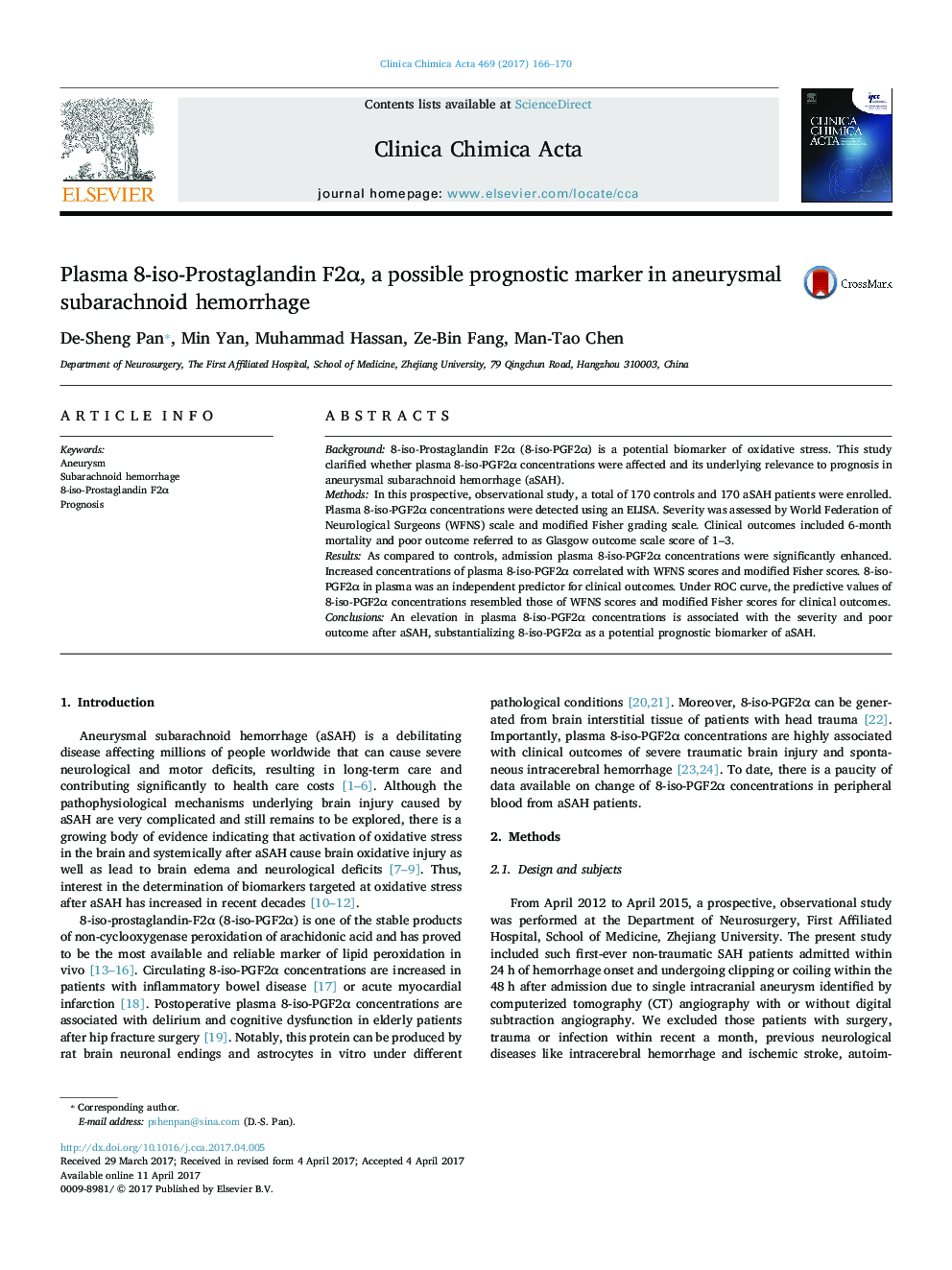| Article ID | Journal | Published Year | Pages | File Type |
|---|---|---|---|---|
| 5509716 | Clinica Chimica Acta | 2017 | 5 Pages |
â¢Plasma 8-iso-Prostaglandin F2α levels are elevated after aneurysmal subarachnoid hemorrhage.â¢Plasma 8-iso-Prostaglandin F2α levels correlate with disease severity.â¢Plasma 8-iso-Prostaglandin F2α is an independent predictor for 6-month clinical outcomes.â¢Plasma 8-iso-Prostaglandin F2α levels possess obvious prognostic significance.
sBackground8-iso-Prostaglandin F2α (8-iso-PGF2α) is a potential biomarker of oxidative stress. This study clarified whether plasma 8-iso-PGF2α concentrations were affected and its underlying relevance to prognosis in aneurysmal subarachnoid hemorrhage (aSAH).MethodsIn this prospective, observational study, a total of 170 controls and 170 aSAH patients were enrolled. Plasma 8-iso-PGF2α concentrations were detected using an ELISA. Severity was assessed by World Federation of Neurological Surgeons (WFNS) scale and modified Fisher grading scale. Clinical outcomes included 6-month mortality and poor outcome referred to as Glasgow outcome scale score of 1-3.ResultsAs compared to controls, admission plasma 8-iso-PGF2α concentrations were significantly enhanced. Increased concentrations of plasma 8-iso-PGF2α correlated with WFNS scores and modified Fisher scores. 8-iso-PGF2α in plasma was an independent predictor for clinical outcomes. Under ROC curve, the predictive values of 8-iso-PGF2α concentrations resembled those of WFNS scores and modified Fisher scores for clinical outcomes.ConclusionsAn elevation in plasma 8-iso-PGF2α concentrations is associated with the severity and poor outcome after aSAH, substantializing 8-iso-PGF2α as a potential prognostic biomarker of aSAH.
